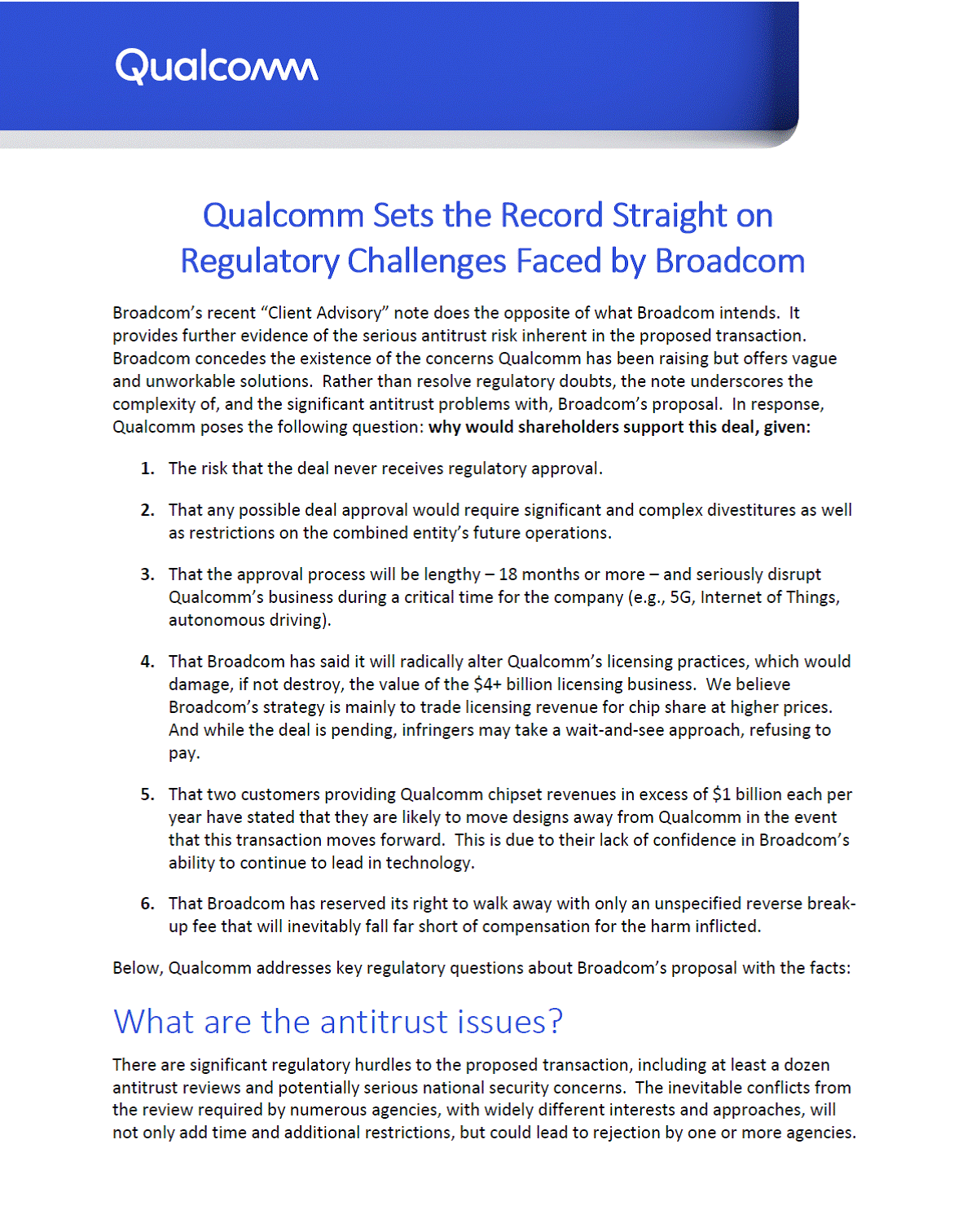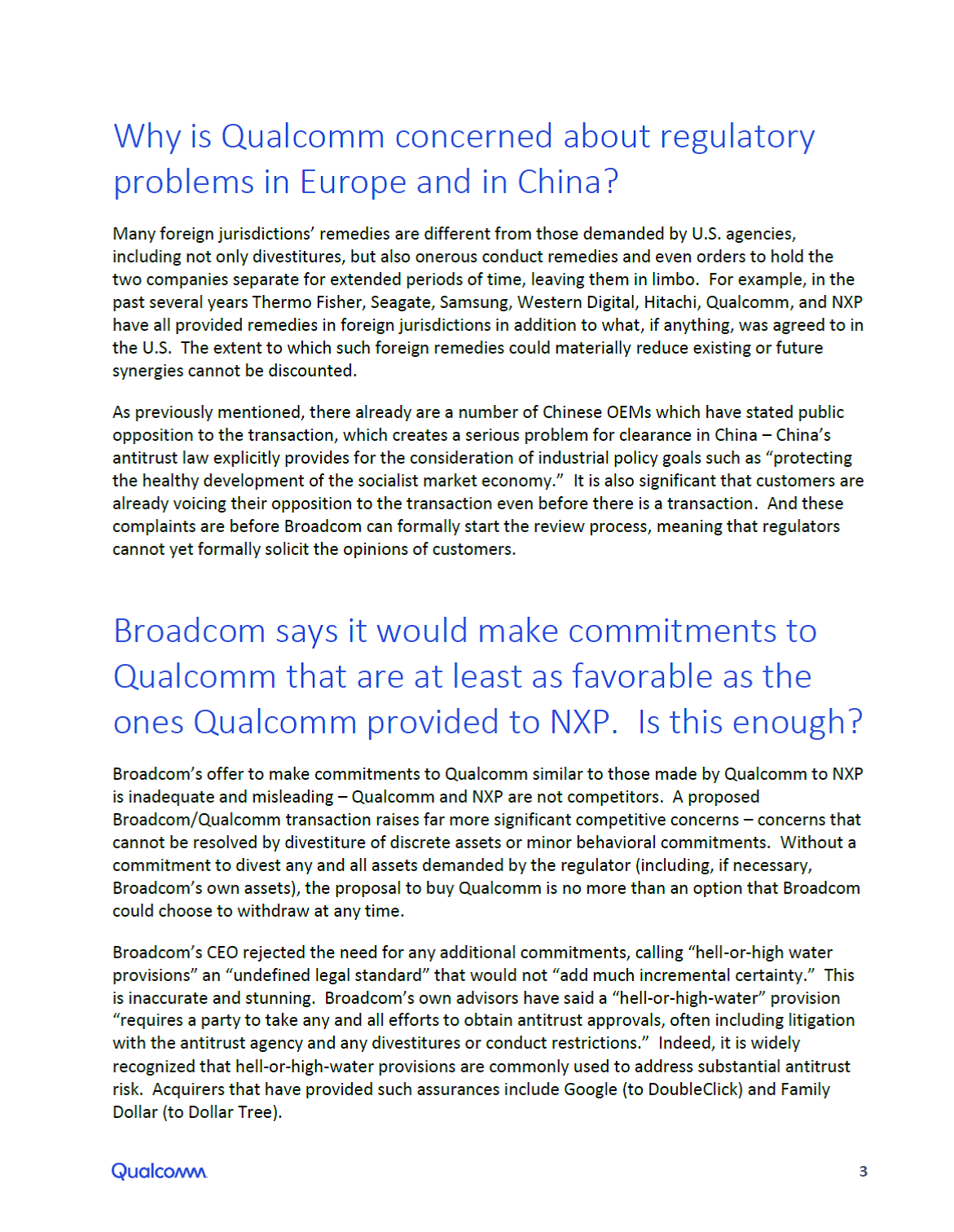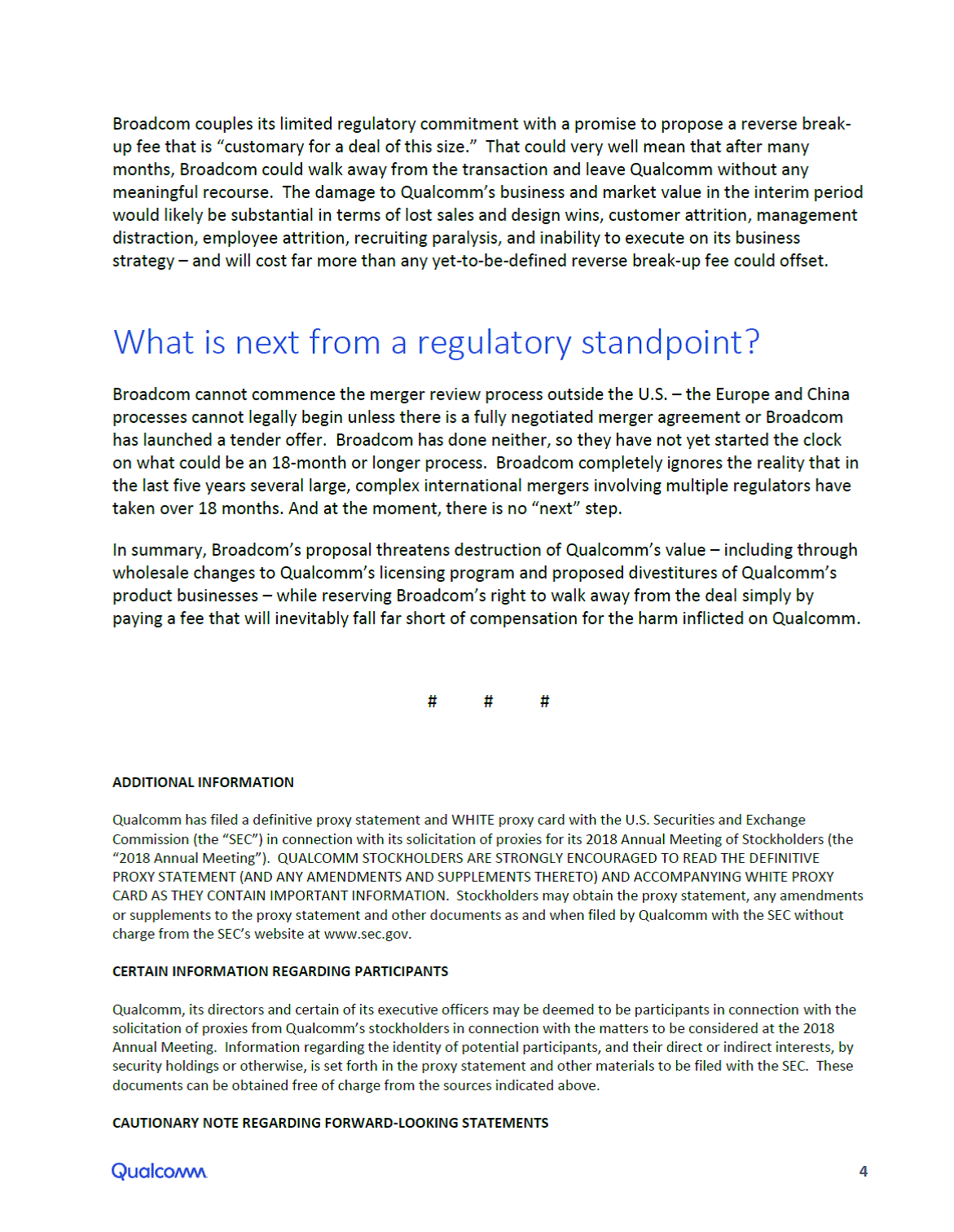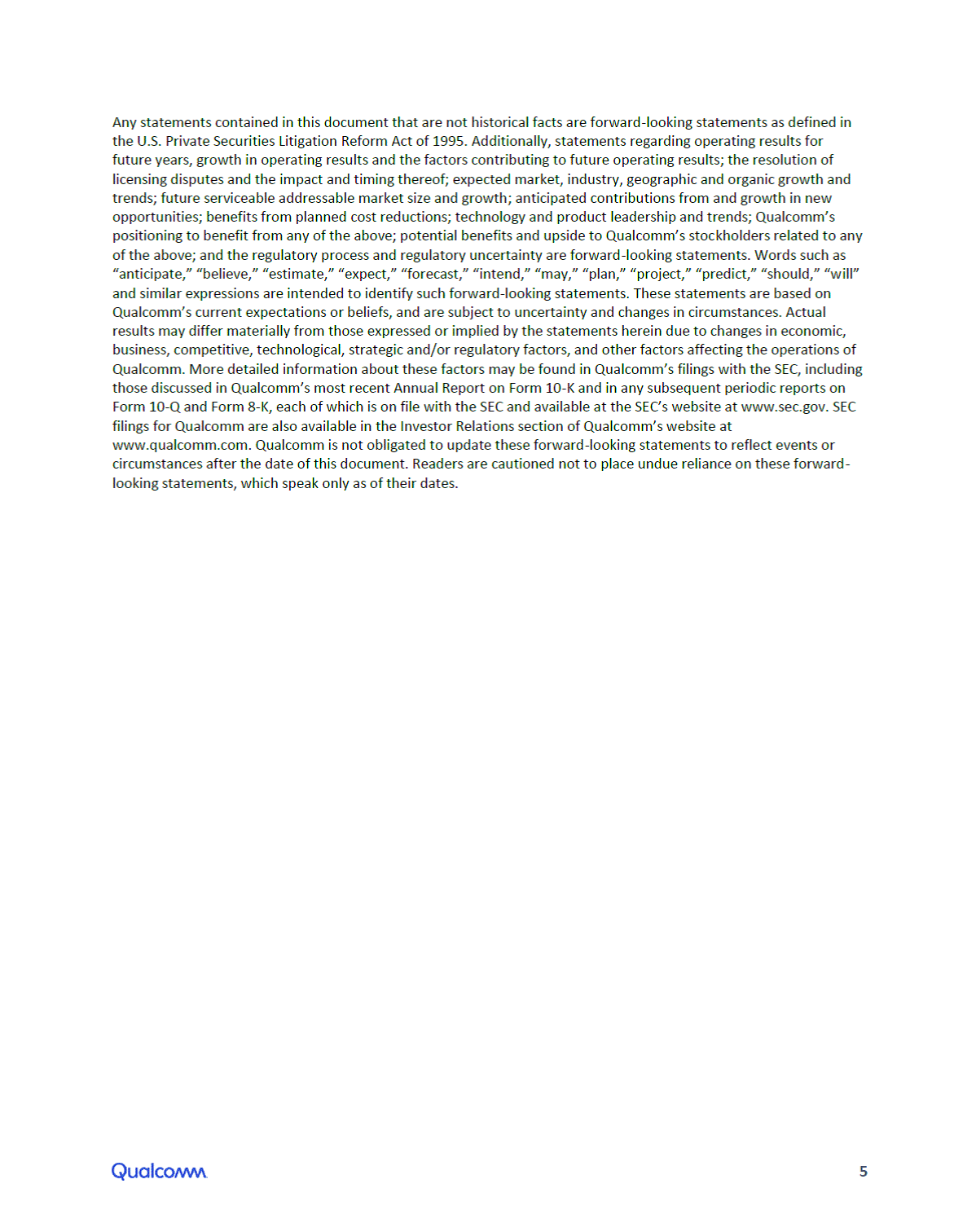Qualcomm Sets the Record Straight on Regulatory Challenges Faced by Broadcom Broadcom’s recent “Client Advisory” note does the opposite of what Broadcom intends. It provides further evidence of the serious antitrust risk inherent in the proposed transaction. Broadcom concedes the existence of the concerns Qualcomm has been raising but offers vague and unworkable solutions. Rather than resolve regulatory doubts, the note underscores the complexity of, and the significant antitrust problems with, Broadcom’s proposal. In response, Qualcomm poses the following question: why would shareholders support this deal, given: 1. The risk that the deal never receives regulatory approval. 2. That any possible deal approval would require significant and complex divestitures as well as restrictions on the combined entity’s future operations. 3. That the approval process will be lengthy – 18 months or more – and seriously disrupt Qualcomm’s business during a critical time for the company (e.g., 5G, Internet of Things, autonomous driving). 4. That Broadcom has said it will radically alter Qualcomm’s licensing practices, which would damage, if not destroy, the value of the $4+ billion licensing business. We believe Broadcom’s strategy is mainly to trade licensing revenue for chip share at higher prices. And while the deal is pending, infringers may take a wait-and-see approach, refusing to pay. 5. That two customers providing Qualcomm chipset revenues in excess of $1 billion each per year have stated that they are likely to move designs away from Qualcomm in the event that this transaction moves forward. This is due to their lack of confidence in Broadcom’s ability to continue to lead in technology. 6. That Broadcom has reserved its right to walk away with only an unspecified reverse break-up fee that will inevitably fall far short of compensation for the harm inflicted. Below, Qualcomm addresses key regulatory questions about Broadcom’s proposal with the facts: What are the antitrust issues? There are significant regulatory hurdles to the proposed transaction, including at least a dozen antitrust reviews and potentially serious national security concerns. The inevitable conflicts from the review required by numerous agencies, with widely different interests and approaches, will not only add time and additional restrictions, but could lead to rejection by one or more agencies.




